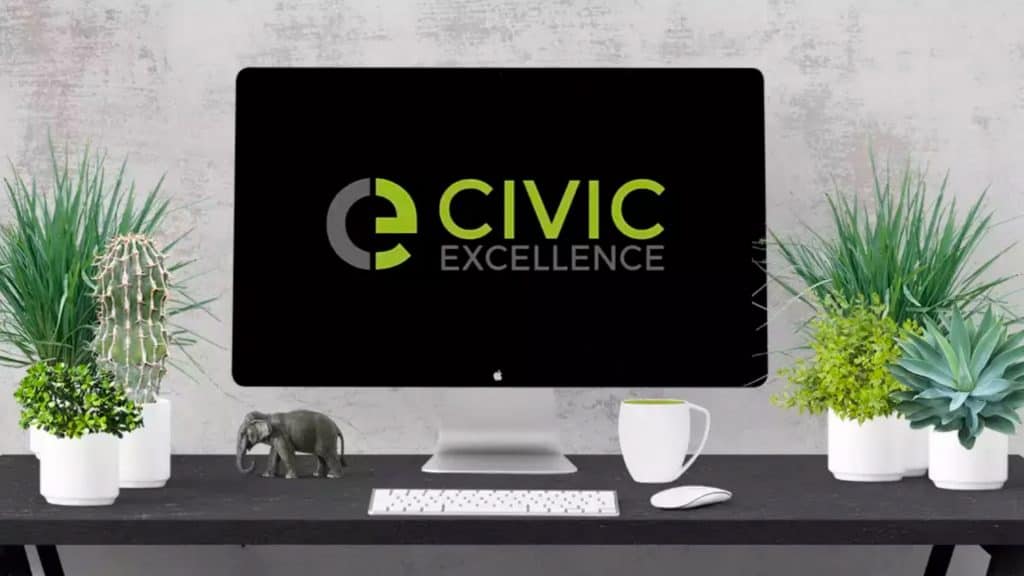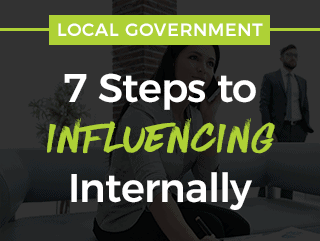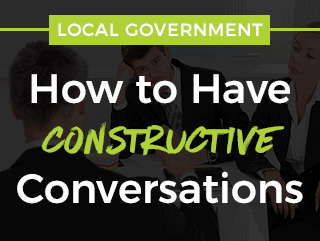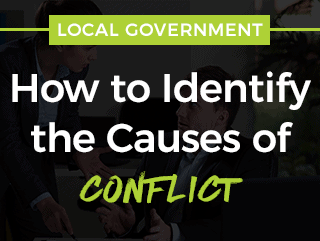Local Government Quick Tips: Use Conflict as a Catalyst
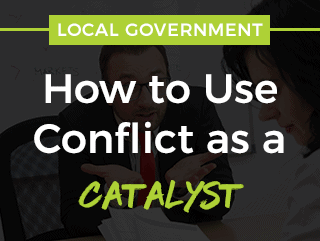
How do you use conflict as a catalyst for productive change?
As a consultant to local governments, a common question I get asked is: “How do we maximize decision making while not letting conflict get in the way?”
Ironically, it is the avoidance of small issues that enables debilitating conflict to flourish. Whether caused by personality conflicts, unclear roles or differing expectations or philosophies, the existence of conflict is part of local government management and elected office.
This is further complicated by the fact that, based on the management training we do, we find that the overwhelming majority of local government managers are not particularly comfortable in conflict situations.
This makes it critical to consider the possible BENEFITS of conflict.
“If two people in business always agree, one of them is unnecessary.”
William Wrigley Jr.
Conflict is inevitable and can be an early warning sign of your team’s demise. But it can also be an essential part of collaboration and solutions thinking.
So how do you walk the tightrope of harnessing the energy that conflict creates while making it work for you (and your team, department or organization)?
If your group is galvanized by a clash, begin by isolating the conflict from its cause.
In all communications, frame the conflict as separate from the group and its goals. It is important to convey to the group that the conflict is not a breakdown of the group, but a natural stage that teams go through.
Second, identify how the conflict is currently being handled, both by the whole group and, if possible, by individual members.
Physically arrange the members to focus on the problem, allying with them against the conflict or dissension.
A tip we’ve found useful with our local government clients is to use a flipchart to put the problem up, so the group is looking at the problem during a discussion (instead of each other). This also has the entire group owning an issue instead of personalizing it.
So what are some of the causes?
People often have 1) an inaccurate understanding of the situation; or 2) a differing interpretation of data.
In our work with elected officials, in particular, we see many conflicts that would actually be resolved (or minimized) by slowing down and collecting (and agreeing on) the underlying facts. In any event, your approach to resolving conflict will always depend on the cause.
We don’t want a conflict to ‘unravel’ our team or decision making, so try to position conflict as a “normal” component of doing business and accomplishing your organisation’s goals. Communicate this directly to the team or department. In short, convey that you are not skittish about conflict, and they don’t have to be, either.
If you’re really NOT comfortable with conflict, realize that it is a skill that can be learned and focus on developing it. When things go wrong, look at the situation as a learning experience rather than an opportunity to point fingers. Your example will influence members of the team to behave the same way.
Your ultimate goal is to foster a team that can handle at least some of the conflicts amongst themselves.
This means that the time you spend now on fostering solutions thinking within the group will pay off later in fewer emotional meetings and lost productivity with a fragmented and upset team.
However, sometimes you DO need to get involved…
Even when you have given your team all the tools it needs to take care of most situations, at times, you need to make the final call on a conflict. So here is a way to frame your decisions:
There are 4 different approaches you can take to a conflict (or negotiation).
Accommodate – One loses the other wins.
Compromise – Both sides win, both sides lose.
Collaborate – Both sides win.
Compete – One side wins, the other loses.
As you consider the situation, the business and resource implications, decide which of these models will work best.
Regardless of which of the models you decide to use, concentrate on the resolution as a means to accomplish the group’s goal.
Use the energy that was created in the vortex of conflict to refocus the group and propel it on to accomplishing its goal. At this point, whether the group can reach a solution with or without your involvement, quick recovery and redirection are essential.
In most situations talking about conflict is the best means to diffuse it, what we avoid tends to grow.
As stated by Phil Knight: “There is an immutable conflict at work, in life and in business, a constant battle between peace and chaos. Neither can be mastered, but both can be influenced. How you go about that is the key to success.”
Click the link below to find out more about your approach to conflict, and how to choose the most effective strategy to resolve it.

